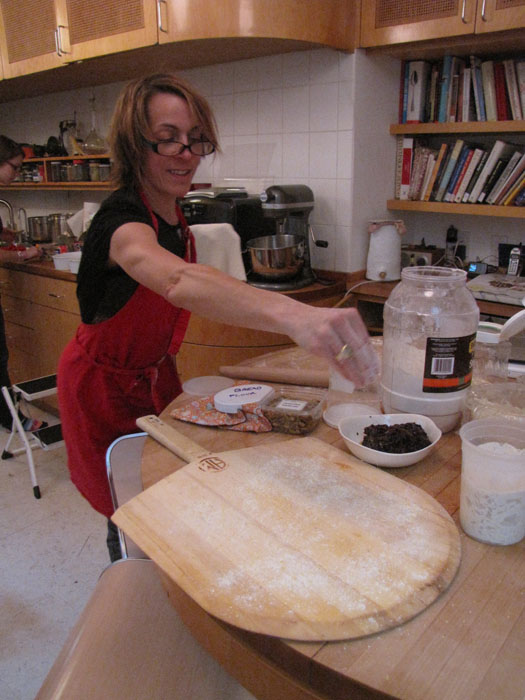Sarah Beth Mendelsohn: September 2011 Archives
 In an ideal world, every class would involve going to your teacher's house for lunch, and, ideally, they would make grilled octopus. Grilled octopus is delicious, but the treat isn't the whole appeal. Our class visit at Laura's served multiple functions. It provided us with a fuller context in which to situate Laura's photography practice, and to think about her use of food in photography to deal with themes of labor and time. It gave us more material for our ongoing discussion of contemporary practice and hospitality. And on a more biographical level, having lunch at Laura's apartment was a lesson in her three-year-old son's penchant for basketball, in her relationship with her cat, and, more generally, in her consideration of the relationships and boundaries between the assemblages she composes for her still lifes, and the things that frame her domestic life.
In an ideal world, every class would involve going to your teacher's house for lunch, and, ideally, they would make grilled octopus. Grilled octopus is delicious, but the treat isn't the whole appeal. Our class visit at Laura's served multiple functions. It provided us with a fuller context in which to situate Laura's photography practice, and to think about her use of food in photography to deal with themes of labor and time. It gave us more material for our ongoing discussion of contemporary practice and hospitality. And on a more biographical level, having lunch at Laura's apartment was a lesson in her three-year-old son's penchant for basketball, in her relationship with her cat, and, more generally, in her consideration of the relationships and boundaries between the assemblages she composes for her still lifes, and the things that frame her domestic life.The conversation at Laura's hinged on details: stories behind chairs or kitchen cabinets or the plates she made, about the decision to pair pistachios with slow-cooked onions on the flatbread she served with the octopus; details about family history and food, and the layered ways in which histories of recipes overlap with histories both of economy and of love. Having previously eaten as a group at Theaster's Dorchester Project, Laura made comparisons between Theaster's and her own approach to bringing people together for meals, and about taking pleasure in providing for people. As Laura's and Theaster's practices exist in different spaces, different milieus, and on different scales, the two also represent different kinds of hosts. At the Dorchester Project too there is a sense of being impressed by the personalities of things--by the bowling alley floor boards and long dining benches, the collections and archives. Their interest has to do with the breadth of resources and contributors essential to the integrity of Theaster's project. By contrast, at Laura's house the overwhelming impression is of the specificity and extent of her own daily aesthetic decisions. Where Theaster's hosting practice seems to be about projections of cultural influence, Laura's is about their internalization. Given the themes of Feast, of the course, and of Laura's practice, many of these moments take place in the kitchen: the ethic articulated by emptying the remains of wine glasses into a growing jar of vinegar on a wooden counter, or the presentation of a large soufflé following a lunch already larger than most of us are used to on a Wednesday.
There is this ideal of eating meals with professors, and of having the opportunity to see where they live, or how they live, because we want to feel that the people we are learning form are also available and receptive to us as people. Witnessing part of Laura's process of negotiating a new form in her practice has been a valuable experience for me. For her project for Feast, Laura has been working out a departure from the specific mode of photography she's been so identified with, looking to reflect on themes such as accessibility and generosity, which have long been present in her work, and to engage them from a different angle. Hosting us for lunch felt like practice.